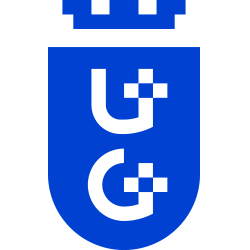
ul. Bażyńskiego 1a 80-952 Gdańsk
Poland
ISNI ID: 0000 0001 2370 4076
GRID ID: grid.8585.0
Jadwiga Bodzińska-Bobkowska
Cahiers ERTA, Numéro 39, 2024, pp. 191-207
https://doi.org/10.4467/23538953CE.24.018.20193Jadwiga Bodzińska-Bobkowska
Cahiers ERTA, Numéro 10 Actes de résistance II, 2016, pp. 87-97
https://doi.org/10.4467/23538953CE.16.018.6716Bruno Durocher, born in Cracow as Bronislaw Kaminski, is rather unknown as a poet. His book of poems Le bras de l’homme, written in Mauthausen concentration camp, where the poet spent six years of war, reveal his traumatic experience of the Shoah. What Durocher asks about in this work is human resistance to the inhuman conditions: resistance of the body and of the soul. The paper attempts to analyse Durocher’s work and compare its two versions: French and Polish, focusing on the means Durocher uses to describe Nazi concentration camp universe and using notion of resistance as methodological tool.
Jadwiga Bodzińska-Bobkowska
Cahiers ERTA, Numéro 8 Narrations, 2015, pp. 77-87
https://doi.org/10.4467/23538953CE.15.015.4350Syncopated narration in Christian Gailly’s works
Christian Gailly, a contemporary French writer, former musician, admits he is deeply inspired by jazz and its literary representations. This essay aims to highlight the specificity of his works, which, by the construction of time, space, characters and narration, have become an example of the literary genre called „jazz novel”.
Jadwiga Bodzińska-Bobkowska
Cahiers ERTA, Numéro 20, 2019, pp. 111-124
https://doi.org/10.4467/23538953CE.19.032.11556Christian Gailly, a contemporary French writer, former musician, admits he is deeply inspired by jazz and its literary representations. This essay aims to highlight the role of music – source of dynamics and life’s motivation – and its double influence on the protagonists of the Gally’s novel Be‐Bop.
Jadwiga Bodzińska-Bobkowska
Cahiers ERTA, Numéro 29, 2022, pp. 132-150
https://doi.org/10.4467/23538953CE.22.005.15626The aim of this paper is to describe the beginnings, rather unknown, of the CRICOT theatre and to demonstrate the evolution which took place between the first show of CRICOT1 and the last piece performed in 1938. Focusing on the manners of treating the scenic object, the scenography, the costumes and the masks, the paper analyses the transformation of the amateur theatre: artistic, satirical, visual and comic into quasi-professional theatre, carrying an existential message. Message to be developed afterward by the world-famous collective, reformer of the European stages: Tadeusz Kantor’s CRICOT2.
Jadwiga Bodzińska-Bobkowska
Cahiers ERTA, Numéro 14 La terre, le territoire, la carte, 2018, pp. 55-68
https://doi.org/10.4467/23538953CE.18.009.8832The paper aims at describing and interpreting works of polish‐french poet Bruno Kamiński‐Durocher demonstrating how strongly it is anchored in the author’s biography, space and the places he inhabits and tames. This analysis is structured with the notion of territory and what Deleuze and Guattari refer to as territorialisation, deterritorialisation and reterritorialisation. They are used to mark the Territory sought in vain by narrators and lyrical subjects of Durocher’s works. I follow the authors of What Is Philosophy in believing that “thinking takes place in the relationship of territory and the earth” in making this relation and how it reflects in works by Bronisław Kamiński, a focal point of my interest in this paper.